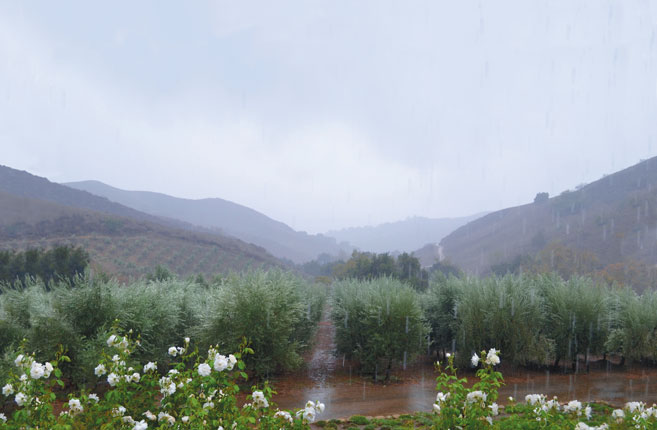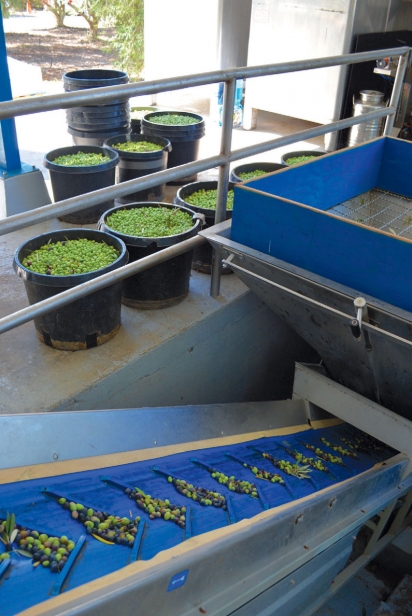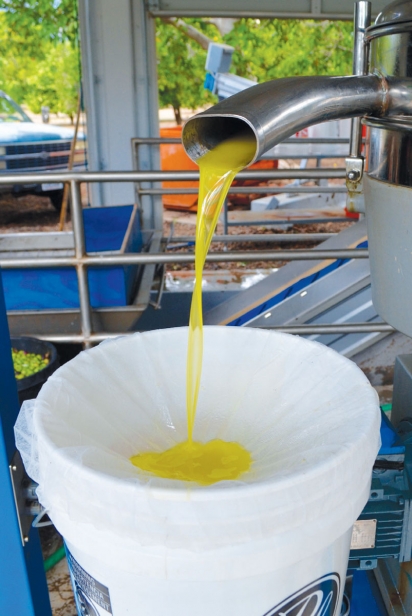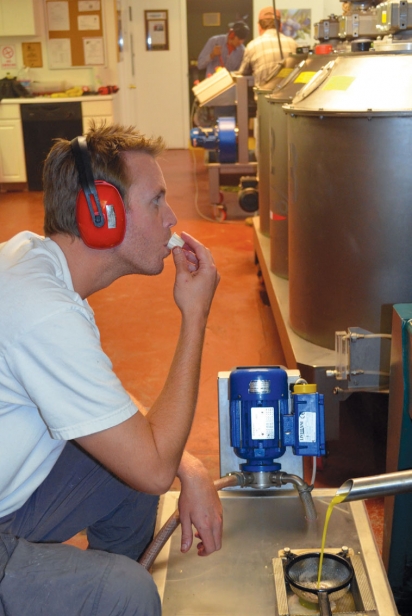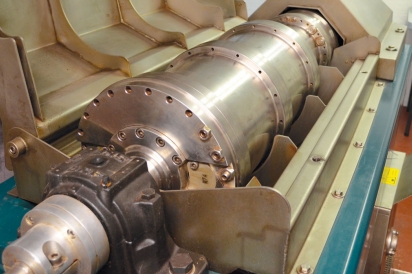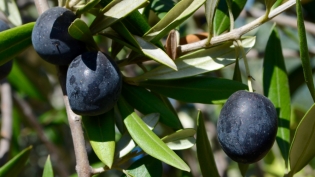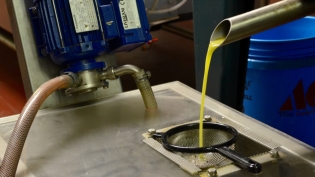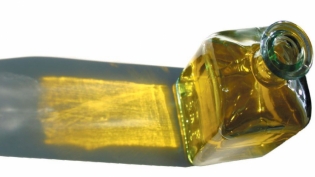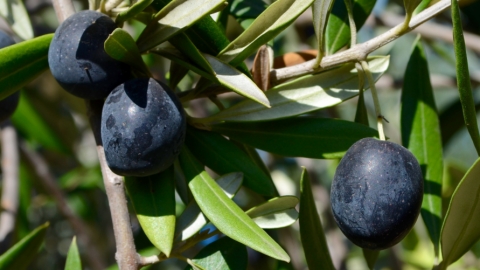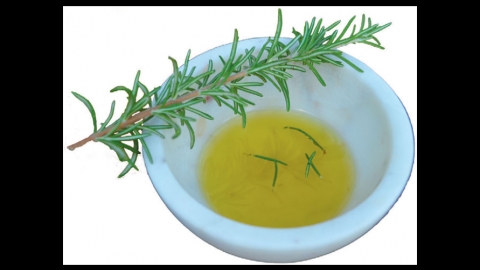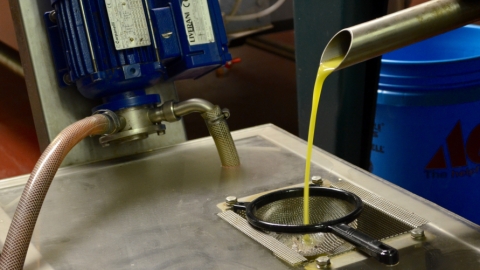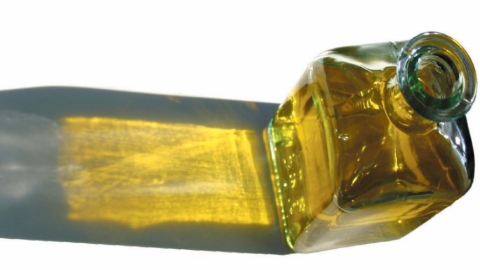From Olive to Oil
The olives ripened sooner this year, so there I was on this sweltering day in early October at Ojai Olive Oil Company’s Asquith Ranch in the East End of the Ojai Valley to witness the just-harvested olives being milled into oil. The harvest varies year to year and variety to variety, says Jeff Luttrull of Regalo Extra Virgin Olive Oil in Ojai, though the harvest is usually later.
While everyone involved with the harvest and milling calmly approached the task at hand, it was clear they knew the mission: complete the transformation of this olive crop from some of the approximately 5,000 trees within three hours of picking. (My job was to stay out of their way, which I mostly did.)
Over the course of a week, I experienced entire processing operations at both Ojai Olive Oil and Regalo’s Omaggio Farm with its 2,200 trees, and harvesting among the 3,000 trees at Buon Gusto Farms of Ventura.
Buon Gusto had coordinated its harvest to align with scheduled time at Figueroa Farms, a mill in Santa Ynez. The day I visited was one of the rare rainy days we’ve had this fall. The rain, however, didn’t faze the crew in the least as they worked their way through the trees that had been tagged for harvesting.
The Ojai Olive Oil and Regalo mills, overseen by Philip Asquith and Mike Cregan, respectively, use different sets of equipment, though both are high-quality Italian-built systems engineered specifically for olive milling. Both mills provide workers and visitors earplugs to dampen the noise of the equipment—especially the 4,000—5,000 rpm centrifuges, which sound like jet engines preparing for take-off as they separate the oil. In both mills, the just-picked blend of Italian olives runs through machinery that removes stems and leaves, cleans the olives and crushes them, pits and all, into a paste. That paste is then stirred in malaxing units until the oil starts to separate from the solids.
“The range of oil varies not only by type but by weather and soil and water,” said Mark Mooring of Buon Gusto, a certified organic farm. “I have seen it as low as 7% [other people’s crops] and as high as 22% [mine in a great year]. A good average is 12%. Ours came in at 16.4% this year.”
At Ojai Oil Olive Oil, this stirring takes place in three cylindrical tanks, allowing multiple time-phased batches to run concurrently. Regalo uses a single, large rectangular tank with an auger type of stirring device. It was during this malaxation step that I smelled the rich, fresh aroma from the olives.
Asquith and Cregan both visually inspected the paste as it neared the anticipated stirring time to determine exactly when to send the olives through to the equipment that separates out the oil.
After what seemed like a long time in these high-speed decanters, oil started flowing from the “exhaust pipes.” I joined the workers who were all anxious to taste this olio nuovo, or “new oil.”
As is typical of the first extra-virgin olive oil out of the mill each season, it had a bold, fresh flavor. And since the sediment hadn’t settled, it had a beautiful translucent green color. Taking a swig, I felt a stronger-than usual “burn” in the back of my throat. The oil’s healthful polyphenol counts contributed to the pungency I noticed.
While my focus was the color and taste of the oil, Asquith was looking for more.
“When the oil comes out of the mill it is very bitter and cloudy,” he said. “It’s hard to know what it will taste like once it’s mellowed and been decanted. Mostly I’m looking to make sure nothing is wrong and to look for any strong flavors that can give an indication of what to expect.”
The bulk of the oil was filtered again and then “polished” in another step that separates out any remaining particles and water. It’s this “clean oil” that is then piped into the holding tanks, where it will remain for the settling until bottled.
“We get about one gallon of olive oil from 50 pounds of olives on average,” said Asquith. “Or one gallon per every two mature trees.”
That leaves a large amount of the oil-free paste after processing. Ojai Olive Oil pumps the leftover paste directly into an outdoor pit where they make a compost tea to be used to enrich the soil throughout the orchard. Regalo pumps theirs into dumpster-sized bins to be mixed with other ingredients and spread over their grounds.
Heading out of these mills, I marveled at the process of how the artisan olive oils in my kitchen are made. And craved some crusty French bread dipped in olive oil.
Ventura County has 12 growers and a total of 86.7 acres of olive trees.
—Ventura County Agricultural Commissioner’s Office


